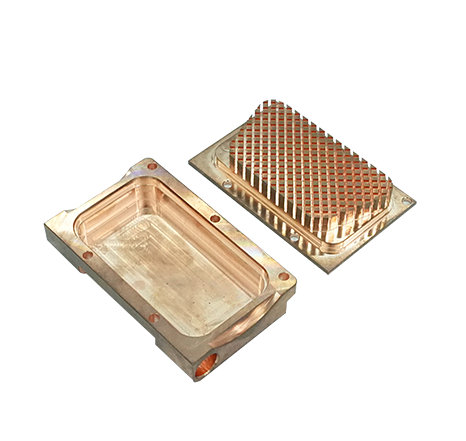

Dongguan dry Xing Yuan hardware products Co., LTD
Phone: 13723735921
Address: No. 462 Houda Road, Dalingshan Section, Dalingshan Town, Dongguan City
E-Mail: qxywj@qxyboom.com
Website: www.dgqxy.cn
2025-01-16 16:09:00
Visit:
There are some essential differences in the heat dissipation principle between cold forging radiators and other common radiators. The following is a related introduction:
Heat dissipation principle of cold forging radiator
Cold forging radiators are mainly based on the principles of heat conduction and radiation for heat dissipation. The cold forging process gives the radiator a dense internal structure and high metal purity, which is beneficial for heat conduction. When a heat source (such as electronic components) generates heat, the heat will quickly be conducted to the entire heat sink through the bottom surface of the cold forged heat sink in contact with the heat source. Due to the large heat dissipation area and carefully designed fin structure of cold forged heat sinks, heat can be efficiently dissipated from the surface of the heat sink to the surrounding air in the form of thermal radiation, thereby achieving heat dissipation.

The essential difference from other common radiators
The difference from air-cooled radiators: air-cooled radiators mainly rely on fans to drive air flow and remove heat through forced convection. Even without fan assistance, cold forged radiators can dissipate heat solely through natural convection and thermal radiation, and their thermal conductivity efficiency is high, without relying on air flow velocity to dominate the heat dissipation effect. The heat dissipation effect of air-cooled radiators will significantly decrease when the fan fails, while the heat dissipation performance of cold forged radiators is relatively more stable.
The difference from water-cooled radiators: water-cooled radiators use liquid such as water as a heat transfer medium, circulate the liquid in the pipeline, and take away the heat from the heat source. In places far away from the heat source, the heat is dissipated into the air through the radiator. Cold forging radiators do not require a liquid circulation system and there is no risk of liquid leakage. The heat dissipation effect of water-cooled radiators is limited by factors such as the specific heat capacity and circulation speed of the liquid, while cold forged radiators directly dissipate heat through their own structure and material properties, which are more advantageous in some miniaturized and highly reliable scenarios.
Difference from heat pipe radiators: Heat pipe radiators use the phase change of the working fluid inside the heat pipe to transfer heat, and have extremely high thermal conductivity efficiency. But the working principle of heat pipe radiators depends on complex mechanisms such as changes in the state of the working fluid inside the heat pipe and capillary structures. The heat dissipation principle of cold forged radiators is relatively simple and direct, mainly based on the heat conduction and radiation of solid metals. There are significant differences in cost and manufacturing process complexity compared to heat pipe radiators, and cold forged radiators may have unique advantages in high temperature stability and vibration resistance.

Focus on cold forging radiator, cold forging parts, cold forging IGBT copper and aluminum cooling module, super power radiator and other products.
+86-0769-33287786
13723735921
No. 462 Houda Road, Dalingshan Section, Dalingshan Town, Dongguan City
Copyright: Dongguan dry Xing Yuan hardware products Co., LTD
Service support: Huashang Network
